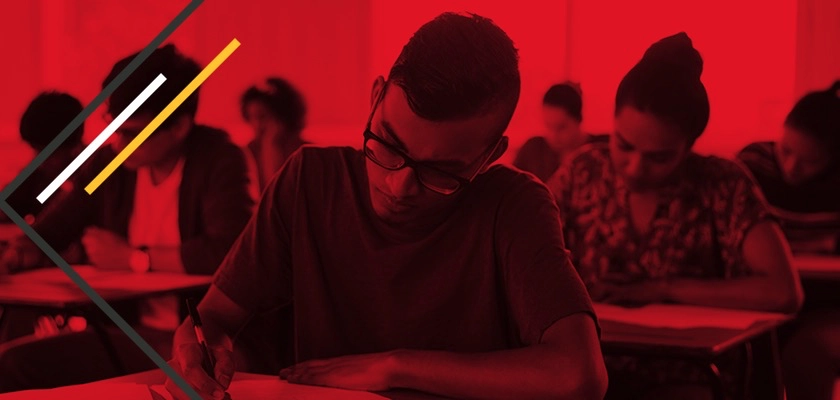4 Strategies to Promote Diversity in the Classroom
Being mindful and respectful while fostering an environment that allows students to be themselves and speak freely requires thoughtful diversity inclusion.

Our college classrooms have become more diversified; with the point of intersection between racial groups, religions, languages, gender identities, and sexual orientations expanding and changing. Properly harnessed, this collage of demographics can help to ignite discussion and broaden perspectives. At the same time, though, a diverse student population complicates the traditional model of communication. How can any instructor reach so many populations with one lesson?
The following are some practical tips for navigating and promoting diversity in your classroom:
- Ask Students to Self-Identify Their “Lens.”
Tapping diversity’s power means asking students, as individuals, to ponder their contributions to the classroom. Each semester, I begin with a thorough discussion of “lenses”—namely, the notion that one’s identity informs the way he or she interprets the world. From socioeconomic status and race to religion and sexual orientation, students learn that their tastes, viewpoints, and decision-making is often influenced by their respective backgrounds. Together, we list the factors that might shape our identities and begin to think: how do these facets of our character affect the ways in which we view the world? Often, this question is answered in a short piece of exploratory writing—an assignment that asks students to locate their “lens” and examine the ways in which it informs their worldview. On one hand, this is useful as a “getting-to-know-you” kick-start to the semester, giving fledgling scholars an opportunity to introduce themselves in writing and practice healthy self-disclosure with the instructor; on the other, it prompts them to think metacognitively—grappling with the influences and processes that shape their thinking. - Consider that Diversity is Not Exclusively Cultural.
Alongside the diverse colors, creeds, and languages that may compose your classroom, students may also vary in their approaches to learning. Anyone seeking to create an inclusive atmosphere should consider how effectively their lessons address (1) visual learners, (2) keen listeners, and (3) strong readers. In order to reach this diversity of learners, instructors may consider a multimodal approach to teaching, utilizing still images, charts/graphs, GIFs, video clips, podcasts, and written text to translate core concepts. The goal, of course, is to optimize student success across the board, allowing oral, aural, textual, and visual learners to find their own pathways to comprehension. Employing multiple learning strategies—as opposed to the straightforward lecture model—can help to assure instructors that their course content is being received by a diversity of students. - De-Colonize the Syllabus.
In courses that require written texts as an integral part of their syllabi, instructors (across the disciplines) are making a concerted effort to move beyond the confines of the Western (white) canon. As college demographics shift over time, it makes perfect sense to expose our students to authors that better represent their varied and multicultural experiences: female, queer, non-white, and disabled. In courses I’ve previously taught, authors like Amy Tan, Mark O’Brien, and Julia Serano have helped to complicate and broaden the often limited (and Euro-centric) readings one finds in a standardized textbook. For those disciplines, like Math and Science, which stress the theoretical and statistical, instructors might consider highlighting the accomplishments and contributions of minority scholars. Even this slight gesture toward inclusion can help to make students feel welcome and worthwhile in your classroom—illustrating that there is, in fact, a place for them in the discipline-at-large. - Be Willing to Adapt.
With or without demographic shifts on college campuses, pedagogies are meant to evolve from semester to semester. Academic integrity is one thing, but holding onto rigid standards of grading, decades-old syllabi, and philosophies about “the right way to teach” does favors for no one—least of all a diverse student population. Although this tip is largely philosophical, keeping an open mind (both academically and interpersonally) is ultimately the most meaningful change that instructors can implement for their students. In practicing flexibility, we can learn to make room for the needs of ESL students (who may require extra help with grammar and syntax), low-income students (whose employment may interfere with attendance), and the devoutly religious (whose faith may preclude them from certain familiarities, like shaking hands).
Instructors who are keen to adapt their approaches may take a page from Anthony Berryhill and the Center for Teaching and Learning at Yale University, which suggests a few “small adjustments” to help integrate diverse student populations. Instructors might consider:
A greater sensitivity toward context, keeping in mind that “not all students who are in a classroom may come from the same school background (or quality), or may even be US citizens.” Instructors can no longer assume that students share the same points of reference; thus, explaining the context or background of an example creates an atmosphere of inclusion. Minimizing cost.
As Berryhill writes, “Students may come to a classroom under restrained resources, but may be too embarrassed to say that they cannot afford the books.” Thus, if it is within an instructor’s power to lower the cost of textbooks or course content—perhaps even keeping required materials on reserve in the library—then this can help address economic disparity between students. Including resources for student success. If your institution offers counseling services, tutoring, or hosts clubs to address the on-campus needs of diverse populations, let everyone know. As Berryhill puts it, many students who may have special needs go without simply because they do not know of such options.”
It is by no means the duty an instructor to singlehandedly meet the individual demands of every student; nevertheless, when faced with a wide cross-section of cultures, creeds, and orientations, it no longer makes sense to expect students to conform to our expectations. In the spirit of true academic intercourse, we adapt our styles and strategies (even slightly), as they learn to adjust.
Works Cited:
Diversity in the Classroom Module, Anthony Berryhill and Graduate Teaching Center, © 2008.
